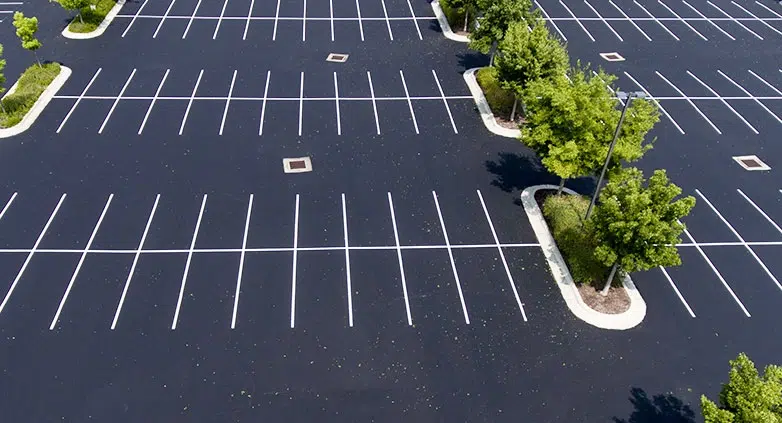A clean and well-maintained parking lot not only looks good, but it also promotes safety for drivers and pedestrians. Regular cleaning of a parking lot is important to remove dirt, debris, and oil stains that can accumulate over time. Here are the steps involved in parking lot cleaning.
Plan and Prepare
Before starting the cleaning process, it’s important to plan and prepare. This includes assessing the size and layout of the parking lot and determining the equipment and cleaning solutions needed. It’s also important to notify any tenants or customers that the parking lot will be close for cleaning and to block off the area to prevent access.
Remove Debris
The first step in cleaning a parking lot is to remove any debris, such as leaves, branches, and trash. This can be done using a broom, blower, or vacuum. It’s important to remove as much debris as possible before moving on to the next step to prevent it from getting stuck in the cleaning equipment or interfering with the cleaning process.
Sweep
After removing the debris, the next step is to sweep the parking lot. This is typically done using a power sweeper, which can be attached to a tractor or truck. A power sweeper has rotating brushes that sweep up dirt and debris and deposit it into a collection container. Sweeping is important to remove loose dirt and prepare the surface for the next step.
Pressure Wash
After sweeping, the next step is to pressure wash the parking lot. Pressure washing uses high-pressure water to clean and remove stubborn stains, such as oil and grease. A pressure washer can rente or purchased from a hardware or home improvement store. It’s important to use the right nozzle and pressure setting for the surface to clean to avoid damage.
Apply Cleaning Solution
In addition to pressure washing, a cleaning solution can apply to the parking lot to remove tough stains and grime. The cleaning solution can sprayed on using a sprayer or distributed using a scrubber machine. The type of cleaning solution use depends on the surface being clean and the type of stains being remov. For example, an oil-stain remover can use to remove oil stains.
Scrub
After applying the cleaning solution, the next step is to scrub the parking lot. This typically done using a scrubber machine, which has rotating brushes that scrub the surface and remove dirt and grime. A scrubber machine can rented or purchased from a cleaning equipment supplier.
Rinse
After scrubbing, the next step is to rinse the parking lot with clean water. This can done using a hose or a pressure washer. It’s important to rinse thoroughly to remove any remaining cleaning solution and debris.
Dry
After rinsing, the final step is to dry the parking lot. This can done using a blower or by allowing the surface to air dry. It’s important to remove as much standing water as possible to prevent slip-and-fall accidents.
Inspect and Repair
After cleaning and drying the parking lot, it’s important to inspect the surface for any cracks, potholes, or other damage. Repairs should make as needed to prevent further damage and promote safety for drivers and pedestrians.
Conclusion
Cleaning a parking lot is important for promoting safety and maintaining the appearance of the property. The process involves removing debris, sweeping, pressure washing, applying the cleaning solution, scrubbing, rinsing, and drying. It’s important to use the right equipment and cleaning solutions for the surface to be clean and to follow all safety guidelines. With regular cleaning and maintenance, a parking lot can remain clean and well-maintained for years to come.

